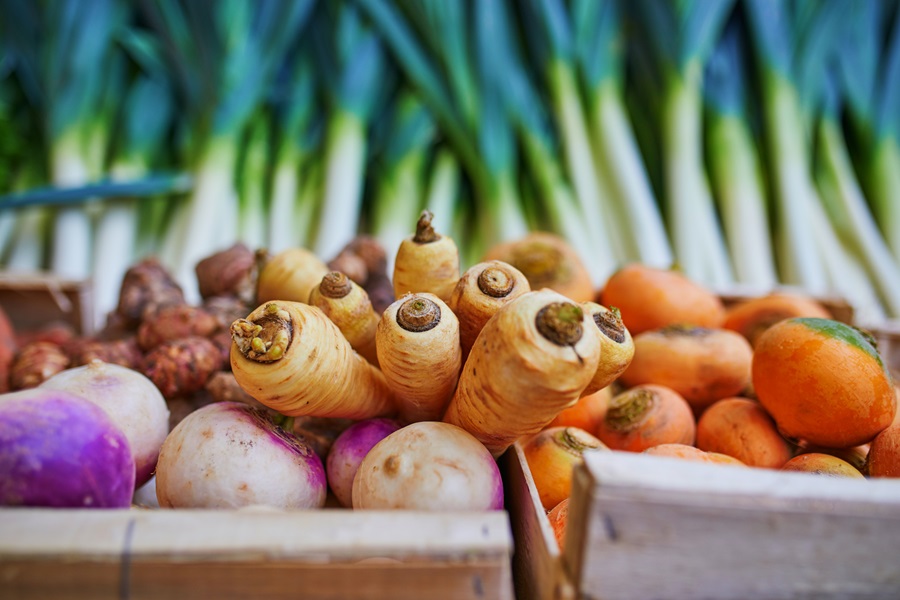There is something perhaps unadventurous in an annual pilgrimage. But travel is only half about seeking: the other half is escape. I didn’t dream that up, but when I read it (or something like it) in Paul Theroux’s The Tao of Travel, it rang true for me. Every year, around the middle of January, I want to escape the short, dark days of the Outer Cape. So, Christopher and I hit the road for New Orleans, where winter is a more abbreviated thing. Here, the cold and near silence of Truro are replaced with warmer rhythms.
But right about now, as we come to the end of our time in NOLA, I feel a growing desire to flee again, this time to trade the intensity of the city for the familiar habits of our lives at Wiley Cottage. I long for walks along the railbed out to the bay and for the sensation of my hands in the cold dirt of the spring garden. I miss our family and our friends and the sole meunière served with rice in the French style at the Wicked Oyster in Wellfleet.
Maybe the greatest privilege of travel is to be dislocated just enough to long for home. (I said that, not Theroux).
I especially want to be back in my own kitchen. The kitchen in the 1870s camelback cottage we rent in the Bywater is fine by late-19th-century standards. We’ve managed well enough without counter space or good knives or the right pots. But when we return to Truro, I slip into my kitchen like a hand in a well-worn glove. I’m already thinking about the dishes we’ll want when we get back next week.

The New England weather will be up and down, I know. On the one hand, everyone will be ready to move on from winter’s hearty stews and root vegetables; we can love them again next fall, but right now we all want something lighter and fresher. At the same time, it will still be chilly and damp in the mornings when I head out to cut back the perennials and plant the peas. We’ll still need dishes that warm us up.
One that’s been on my mind because it’s light as well as warming (not to mention easy and adaptable) is minestrone. The Italian word minestra refers to all kinds of soups, so minestrone would be a big one, meaning not just broth but a bowl full of pasta, legumes, and vegetables. Some food historians trace the roots of minestrone to ancient Rome, where a soup made from pulses (beans, lentils, and peas), grains, and various vegetables was common. It was (and still is) the epitome of cucina povera — cooking that makes use of humble ingredients to create flavorful meals.
The introduction of new vegetables, herbs, and spices from the Americas and the Middle East gradually transformed Italian cuisine — and this soup. Tomatoes, for instance, made their way into minestrone after their introduction in the 16th century. Early versions of the soup would have included whatever seasonal vegetables were available, along with beans for protein and sometimes pasta to add heartiness.
Over time, minestrone evolved into a dish with many regional versions. In northern Italy, where the climate is cooler, minestrone tends to be heartier, featuring legumes, potatoes, and cabbage. In southern regions, the soup is lighter and includes tomatoes, zucchini, and other fresh vegetables. In minestrone Toscano, beans are a key ingredient, often paired with kale. The Milanese version is distinguished by the addition of saffron and contains rice instead of pasta. Minestrone alla Genovese, which typically features green beans, potatoes, and carrots along with pasta, is finished with a basil pesto.
As for the minestrone Truronese made at our house, the consistent elements of the soup are beans, usually canned, a handful of whatever short pasta is left over in the pantry, and the best-looking vegetables available at the grocery store. I’ve included zucchini, turnips, and green beans in this recipe, but asparagus and peas would also be good, and you can substitute vegetables at will.

As a gesture of faith in warming temperatures, I like to swirl a tablespoon of pesto into each bowl. I’m including a pesto recipe here, but I keep a jar of store-bought for this kind of preseason situation. I’m fond of the Italian San Giuliano brand, but I’m not too proud to use the kind you’ll find in the cheese section at Stop & Shop.
A bouquet garni is a bundle of herbs that’s easy to remove before the soup or stew it’s flavoring is served. The Parmesan rind in this one adds depth of flavor, but it’s optional. So is starting off by cooking 4 ounces of pancetta in the soup pot before you add the onions and carrots.
When I make my high summer version of this soup, I do as the Italians do and serve it just barely warm. For now, it’s best served piping hot with a hunk of crusty bread.
SPRING MINESTRONE
Makes 6 to 8 servings
1 Tbsp. olive oil
4 oz. pancetta, diced
1 medium onion, diced
2 medium carrots, diced
1 celery stalk, diced
Salt
4 large garlic cloves, minced or pressed
1 14-oz. can chopped tomatoes, with their liquid
2 quarts water (or vegetable stock)
1 medium turnip, peeled and diced
¾ lb. zucchini, diced
1 bouquet garni (a Parmesan rind, 1 bay leaf, 3 sprigs parsley, and 3 sprigs thyme, tied together with kitchen twine)
1 15-oz. can cannellini or other white beans, drained and rinsed
6 oz. green beans, trimmed½ cup
short pasta, such as elbow macaroni or penne
Freshly ground pepper to taste
Grated Parmesan and slivered fresh basil leaves, or ½ cup pesto for serving
- Heat the olive oil over medium-low heat in a large, heavy soup pot or Dutch oven and cook the pancetta, if you’re using it, for about 5 minutes. Add the onion, carrots, and celery. Cook, stirring, until the vegetables begin to soften, about 3 minutes. Add a half teaspoon salt and continue to cook, stirring often, another few minutes.
- Stir in the garlic until fragrant, about a minute, and then stir in the tomatoes. Simmer, stirring regularly, until the tomatoes have cooked down and are fragrant, about 10 minutes.
- Add 2 quarts water (or vegetable stock), then the turnip and zucchini and the bouquet garni, and bring to a simmer. Add 2 teaspoons salt, reduce the heat to low, cover, and simmer 45 minutes.
- Stir in the canned and green beans. Taste and adjust salt. Remove the bouquet garni and add the pasta to the soup and simmer another 10 minutes or until the pasta is cooked al dente and the green beans are just tender. Grind in some pepper, taste, and adjust seasonings.
- Serve in wide soup bowls with sliced basil and grated Parmesan on top or a spoonful of pesto stirred in.
SIMPLE PESTO
Makes about 2 cups
2 cups fresh basil, leaves only
2 Tbsp. pine nuts, walnuts, or pecans
2 large cloves garlic
½ cup extra-virgin olive oil
½ cup freshly grated Parmesan cheese
- Combine basil leaves, nuts, and garlic in a food processor and whirl until very finely minced.
- With the machine running, slowly dribble in the oil and process until the mixture is smooth.
- Add the cheese and process very briefly, just long enough to combine. Spread a thin layer of olive oil on top to prevent oxidation. Store any you don’t use immediately for up to a week in the refrigerator, or freeze. (For easy-to-use small portions, I pour the pesto into ice cube trays and, once frozen, transfer them to a sealed container to keep in the freezer for up to 6 months.)



